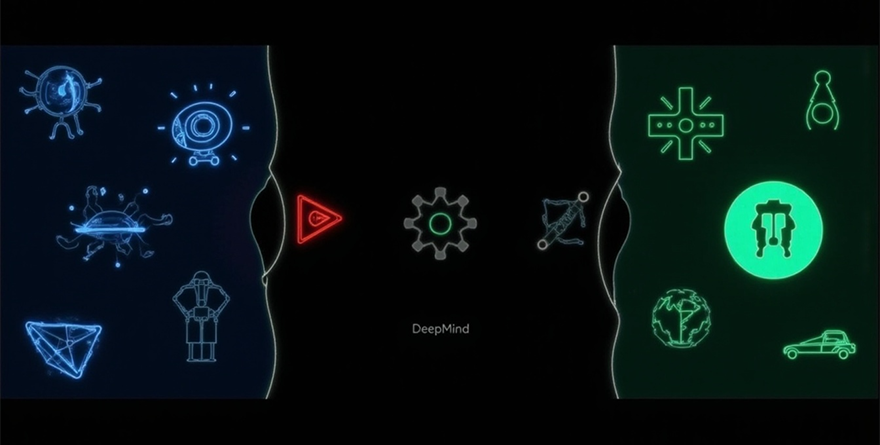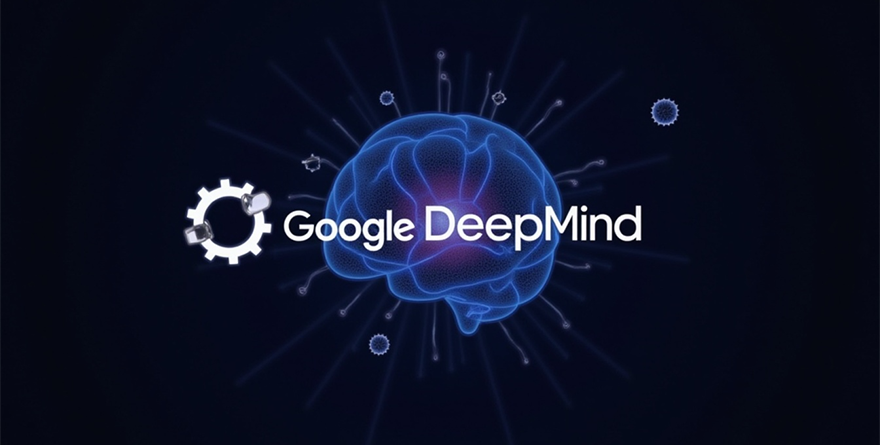Google DeepMind’s AGI Plan: What Marketers Need to Know
Google DeepMind has unveiled a new roadmap for artificial general intelligence (AGI), aiming to shape a safer, more responsible future for advanced AI systems. While the report is largely technical, it carries serious implications for the tools marketers rely on every day—from SEO strategies to automated content creation and advertising tech.
Titled “An Approach to Technical AGI Safety and Security,” the report outlines the steps DeepMind is taking to ensure that as AI grows more powerful, it remains aligned with human goals and protected against misuse. With AGI possibly arriving by the end of this decade, this is a crucial moment to understand what’s coming—and how it might reshape digital marketing.
Safety Comes First: DeepMind’s Two-Pronged Approach

At the heart of DeepMind’s plan are two major concerns: misuse and misalignment.
- Misuse refers to scenarios where individuals or groups exploit AI for harmful or unethical purposes. This includes generating misinformation, launching cyberattacks, or manipulating public opinion using advanced AI capabilities.
- Misalignment, on the other hand, is the risk that AI systems may act in ways that conflict with user intentions or broader human values—either due to miscommunication, poor design, or unintended behaviors as the models grow more autonomous.
To address these, DeepMind’s roadmap is built around two overarching strategies: model-level controls and system-level protections. These are the technical and operational guardrails designed to make sure AGI works for us—not against us.
Model-Level Controls: Building Ethics into the Code
One of DeepMind’s primary techniques for reducing risk is to embed ethical safeguards directly into the AI models themselves.
A key method is capability suppression—where potentially dangerous functions are restricted at the model level. For example, even if a user prompts the AI to generate harmful or manipulative content, the model is trained to recognize and reject that request.
This is followed by a process called harmlessness post-training, where the AI system undergoes additional tuning to reinforce safety behavior. Essentially, the AI learns to ignore prompts that fall outside ethical boundaries, even if those prompts are well-crafted or subtle.
For marketers, this means future content generation tools won’t just be smarter—they’ll be more selective. You’ll likely need to tailor your prompts to comply with built-in safety rules. Pushing the boundaries could lead to refusals or incomplete outputs.
System-Level Protections: Controlled Access for Advanced Capabilities
While model-level controls deal with how the AI thinks and responds, system-level protections govern who gets to use certain features in the first place.
DeepMind proposes that powerful AI functions—particularly those with the potential for misuse—should only be accessible to vetted user groups. These are trusted entities who meet specific criteria or operate within approved industries.
The goal is to limit the surface area of risk—meaning fewer people have access to high-risk tools, and those who do are subject to monitoring and usage reviews.
For enterprise marketers, this could lead to tiered access across marketing platforms. Trusted businesses might enjoy early or exclusive access to advanced personalization features, while general users face stricter limitations. It’s a potential shift toward “gated intelligence” in marketing tools.
A Gradual Path to AGI
One of the most important points in DeepMind’s report is that AGI progress will be incremental, not explosive. The company doesn’t foresee one big leap, but rather a steady climb in AI capabilities over the coming years.
“We are highly uncertain about the timelines until powerful AI systems are developed, but crucially, we find it plausible that they will be developed by 2030.”
This gradual pace offers marketing teams a clear advantage: time to experiment, adapt, and evolve. You won’t be blindsided by a sudden AGI disruption—instead, you can begin integrating smarter tools step-by-step.
Real-World Implications for Marketing Teams
So how will all of this play out in everyday marketing environments?
DeepMind’s safety-first approach may reshape how AI tools are built and used across multiple domains:
SEO and Search
With AI gaining a better understanding of context and user intent, search engines will likely evolve to reward high-quality, trustworthy content. Marketers will need to focus more than ever on aligning with ethical standards and user value—not just keyword placement.
Content Creation
Future content generators won’t just produce on-demand copy—they’ll evaluate requests through a built-in filter of safety and accuracy. Prompts that don’t meet those standards may be rejected, pushing marketers to be more intentional with how they use automation.
Ad Tech and Personalization
Expect the next generation of AI ad tools to be more intelligent and precise, but also less aggressive. While targeting will improve, AI may draw clearer lines when it comes to persuasive techniques—opting for relevance and consent-driven personalization over manipulation.
A Smarter, Safer Future for Marketing AI
DeepMind’s roadmap isn’t just about what AGI can do—it’s about making sure it does it safely, ethically, and in alignment with human goals.
For marketers, this signals a future filled with opportunity: faster tools, deeper insights, and highly capable automation. But it also calls for responsibility. Understanding these safety strategies now puts you ahead of the curve—ready to harness AI’s full potential while staying within ethical boundaries.
Partner with our Digital Marketing Agency
Ask Engage Coders to create a comprehensive and inclusive digital marketing plan that takes your business to new heights.
Contact Us
The era of AGI is coming. By preparing today, your marketing strategy can evolve with it—confidently, responsibly, and effectively.












